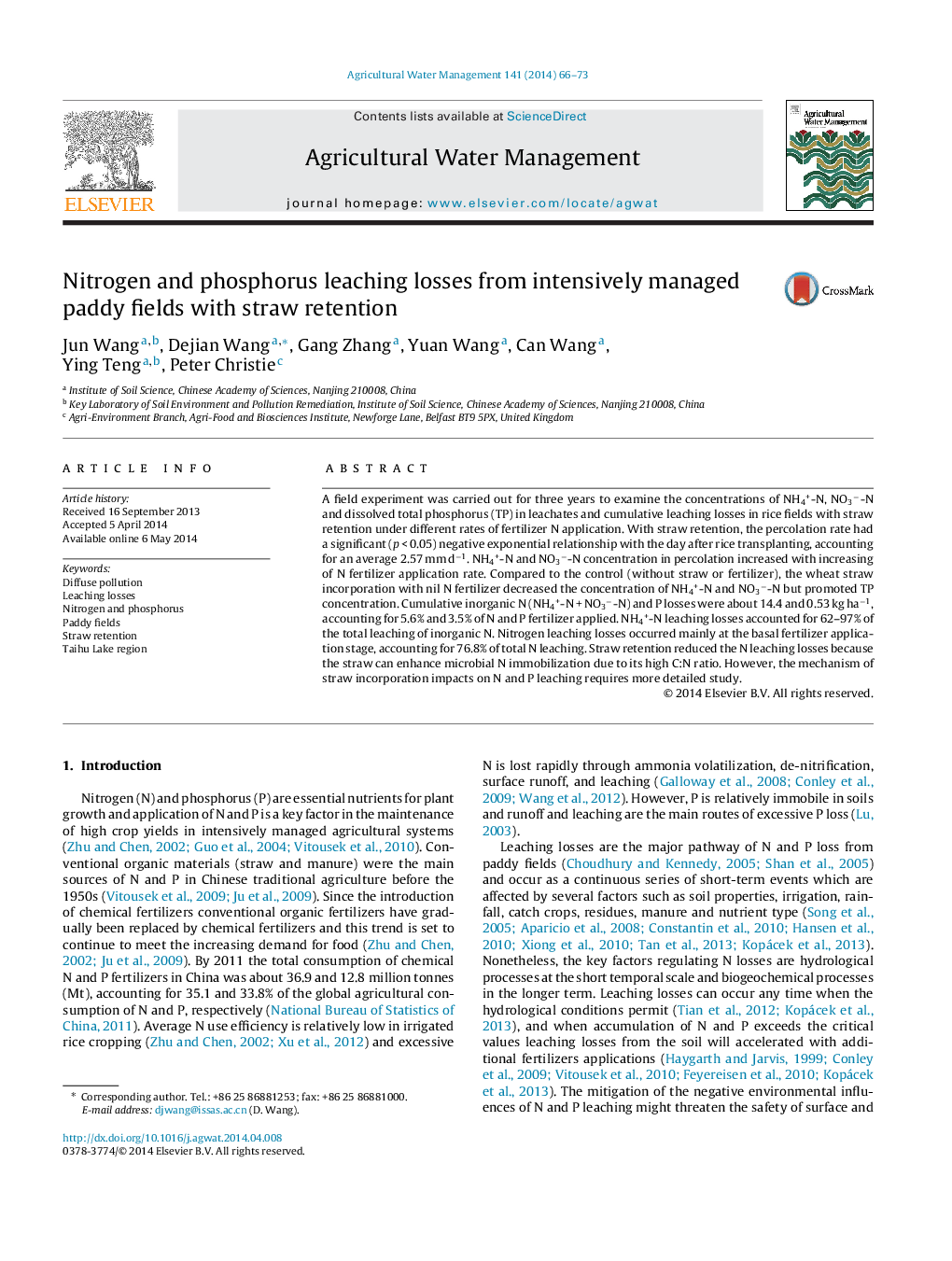| Article ID | Journal | Published Year | Pages | File Type |
|---|---|---|---|---|
| 4478659 | Agricultural Water Management | 2014 | 8 Pages |
•Leaching characteristics of a paddy field with straw retention were monitored in situ.•Nitrogen and phosphorus leaching losses under different N application rates with straw retention were evaluated.•The percolation rate declined with time after rice transplanting in first-order index attenuation.•N leaching occurred mainly at basal fertilization stage and straw incorporation reduced N leaching but stimulated P leaching.
A field experiment was carried out for three years to examine the concentrations of NH4+-N, NO3−-N and dissolved total phosphorus (TP) in leachates and cumulative leaching losses in rice fields with straw retention under different rates of fertilizer N application. With straw retention, the percolation rate had a significant (p < 0.05) negative exponential relationship with the day after rice transplanting, accounting for an average 2.57 mm d−1. NH4+-N and NO3−-N concentration in percolation increased with increasing of N fertilizer application rate. Compared to the control (without straw or fertilizer), the wheat straw incorporation with nil N fertilizer decreased the concentration of NH4+-N and NO3−-N but promoted TP concentration. Cumulative inorganic N (NH4+-N + NO3−-N) and P losses were about 14.4 and 0.53 kg ha−1, accounting for 5.6% and 3.5% of N and P fertilizer applied. NH4+-N leaching losses accounted for 62–97% of the total leaching of inorganic N. Nitrogen leaching losses occurred mainly at the basal fertilizer application stage, accounting for 76.8% of total N leaching. Straw retention reduced the N leaching losses because the straw can enhance microbial N immobilization due to its high C:N ratio. However, the mechanism of straw incorporation impacts on N and P leaching requires more detailed study.
